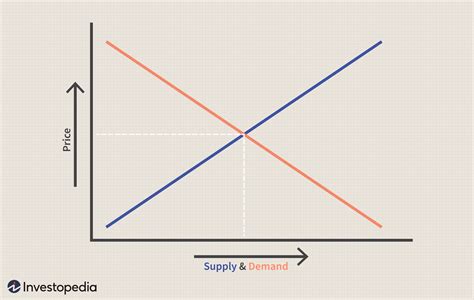relationship between supply and demand in cryptocurrency: look at Litecoin (LTC)
Cryptocurrencies have gained significant attention in recent years, and many investors try to use the rapid development of digital assets. Among these cryptocurrencies is Litecoin (LTC), electronic cash between peers, which has been gaining grip from the moment of launching in 2011. In this article, we will deepen the relationship between pad and demand in Litecoin and examine how it affects the cryptocurrency market.
What is the delivery?
Delivery refers to the total amount of a specific cryptocurrency in circulation. This is the number of coins or tokens that have been separated or created by the network. Delivery of cryptocurrency depends on its algorithm, which decides when new coins are added to the block chain. In the case of Litecoin, the prize for extracting new coins is 50,000 LTC.
What is demand?
The demand refers to the number of Litecoin currencies owned by investors or merchants in circulation. This is the total number of currencies that people have or plan to buy. Several factors can be influenced by the demand for cryptocurrency, including its price, adoption and market feeling.
Relationship between supply and demand: look at Litecoin (LTC)
The relationship between pads and demand is complex and dynamic in cryptocurrencies such as Litecoin. This is how it develops:
- Delivery : The total LTC number available on the market is limited to 84 million. This means that if you buy a certain amount of LTC, you basically limit its potential of future profits.
- Requirement : Several factors can be influenced by the demand for LTC, including its price and adoption indicator. As Litecoin increases, more and more investors will want to buy LTC, increasing the available offer and potentially lowering prices.
- Price supply trade
: When the price of Litecoin is high, investors can be more willing to keep coins due to greater network trust. This can lead to an increase in demand for LTC, which increases its price. On the contrary, when the price of Litecoin falls, investors may have less trust and try to sell their coins, reduce demand and reduce prices.
- This reduction of supply led to greater demand, which increases the price of LTC.
Historical analysis: Litecoin (LTC) supply and demand
To understand the dynamics of Litecoin supply and demand, let’s see some historical data:
- In 2018, the Litecoin price was about USD 300. At this point, the supply available was about 20 million currencies.
- By June 2020, the price increased to over USD 600, which caused an increase in the offer by about 15 million coins to almost 25 million currencies.
- With the increase in prices, demand for LTC increased significantly, which led to a reduction in available supply and the highest prices.
Application

The relationship between adapter and the demand of Litecoin is complex and under the influence of several factors. Price compensation is developed as follows:
- As the price of Litecoin increases, investors increase their shares, increasing the available offer and potentially reducing prices.
- On the contrary, when the price of Litecoin drops, investors try to sell their coins, reduce demand and lower prices.
Understanding the dynamics of supply and demand of Litecoin can help sellers make conscious decisions regarding the purchase or sale of LTC. However, it should be remembered that the cryptocurrency market is instable by nature and is subject to significant price fluctuations.